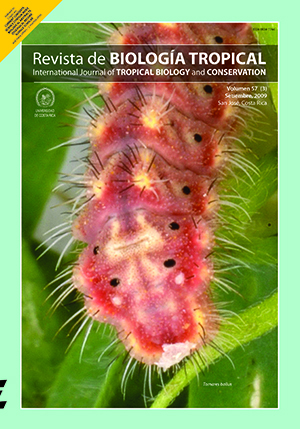Abstract
The number of Leatherback turtle nests and their spatial dis-tribution was compared between years with and without artificial light, and between dark and lighted beach segments, in Cipara Beach, Paria Peninsula, Venezuela. Residents were interviewed to identify their perceptions about the impact of artificial light on sea turtles. Mean volume of sand per meter of beach was larger at La Peña, Cipara and La Remate and smaller at Varadero (p<0.001), increasing from April to June and later decreasing until August (p<0.05). Mean percentage of gravel was higher at Varadero and La Peña, and lower at La Remate and Cipara. Most interviewed people said that artificial light does not affect sea turtles. Between 2000 and 2005, 1 217 leatherback landings and 1 056 nests were observed. Successful nests increased with the years (p=0.035) as well as total nest number (p=0.015). From 2000 through 2003 there were 743 landings, 661 nests and 374 clutches. During the two years with electric light (2004–2005), there were 474 landings, 395 nests and 232 clutches. Proportion of landings with nest building decreased significantly during the years with electric light (p= 0.005), but nesting success did not vary (p= 0.402). No significant difference was found between landings per beach meter in dark and lighted sectors (p=0.244), between nests built (p=0.379) and in the rate of success-ful nesting (p=0.516). Dark and lighted sectors did not differ in the proportion of landings with nest building (p=0.067) and success rate (p=0.833).
##plugins.facebook.comentarios##

This work is licensed under a Creative Commons Attribution 4.0 International License.
Copyright (c) 2009 Revista de Biología Tropical






